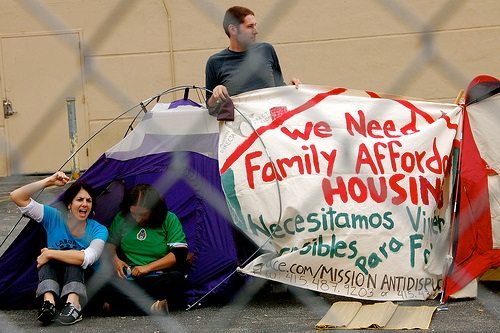
October 16, 2013; New York Times
Sign up for our free newsletters
Subscribe to NPQ's newsletters to have our top stories delivered directly to your inbox.
By signing up, you agree to our privacy policy and terms of use, and to receive messages from NPQ and our partners.
Recently, the New York Times posed the question of what programs could increase the stock of affordable housing in New York and elsewhere. In a section called “Room for Debate,” eight experts responded, giving very different opinions as to how to accomplish the task. As a place to start, none of the debaters asserted that there is enough affordable housing available.
The range of ideas is very wide, and here are a few examples.
- Barika Williams, policy director at the Association for Neighborhood and Housing Development, argues that community development corporations (CDCs) have a long and effective history, and we should return to seeing them as the developer of choice. She argues that under the current initiative favored by Mayor Bloomberg, for-profit developers have been recipients of funding to create affordable housing. However, according to Ms. Williams, these developers do not have to return any profit or leftover funds and, after a certain period of time, the housing can revert to market value, making it no longer affordable. This is not possible for CDCs, who must invest every penny they get in the project and who have to maintain the affordable nature of the housing, by mission.
- Jaron Benjamin, of the Metropolitan Council on Housing, argues that instead of continuing to give millions of dollars in tax breaks to development of luxury towers, the money should be invested to strengthen rent stabilization programs. There are 2.5 million people in New York City living in rent-stabilized apartments, the majority of whom earn less than $38,000 per household. A record number of tenants are in danger of seeing the largest rent increase in five years and so are in danger of not being able to pay and being evicted. When evicted, the apartment can be rented at market value, which has happened to 300,000 apartments over the years. By supporting the rent stabilization program and changing the vacancy laws, we can at least maintain the affordable housing stock we have.
- Edward Glaeser, an economist at Harvard University, states, simply, that to increase the stock of affordable housing, we need more housing. His argument is that the law of supply and demand will eventually create a stock of affordable housing if developers are allowed to build housing. Remove overly restrictive regulations, adjust historic preservation districts, and other ideas will increase the number of dwellings that are built. Inclusionary zoning codes (requiring developers to include affordable housing in their plans), and subsidies will increase access to affordable housing for those who cannot afford the market rates. This, Glaeser argues, will benefit not only those who are lucky enough to get an affordable unit, but the whole community.
- Henry Cisneros, former secretary of the U.S. Dept. of Housing and Urban Development and current co-chair of the Bipartisan Policy Center Housing Commission, suggests that we need to pay special attention to older adults as they age in place. There are 78 million baby boomers who are getting older, heading into retirement years, and who are expected to overwhelmingly want to stay in their homes as long as they can. However, it is also true that older adults on a fixed income spend more than 50 percent of their income on housing, which is far above the recommended percentage. Cisneros argues that a variety of federal programs should be initiated or strengthened to help older adults afford to age in place. He also argues that the costs of the program should be balanced by the large savings in healthcare costs that will be realized.
Other debaters stress the National Housing Trust Fund, using tax revenue to subsidize rents, fairer mortgage practices for minority borrowers, and preserving existing public housing.
Since each standalone article is written by an expert in the field, it is not surprising that each writer argues the benefits of a program or line of thought they are currently working with. Cisneros’ commission, for example, recently released a report on how the federal government can help with programs supporting older adults aging in place. Jaron Benjamin’s day job is on a project promoting tenant rights, and creating a tenant movement in New York City to promote rent reform. Nevertheless, the debate is a valuable one, offering a wide range of intelligent and thoughtful opinions and ideas that can spark thinking in the reader.—Rob Meiksins













